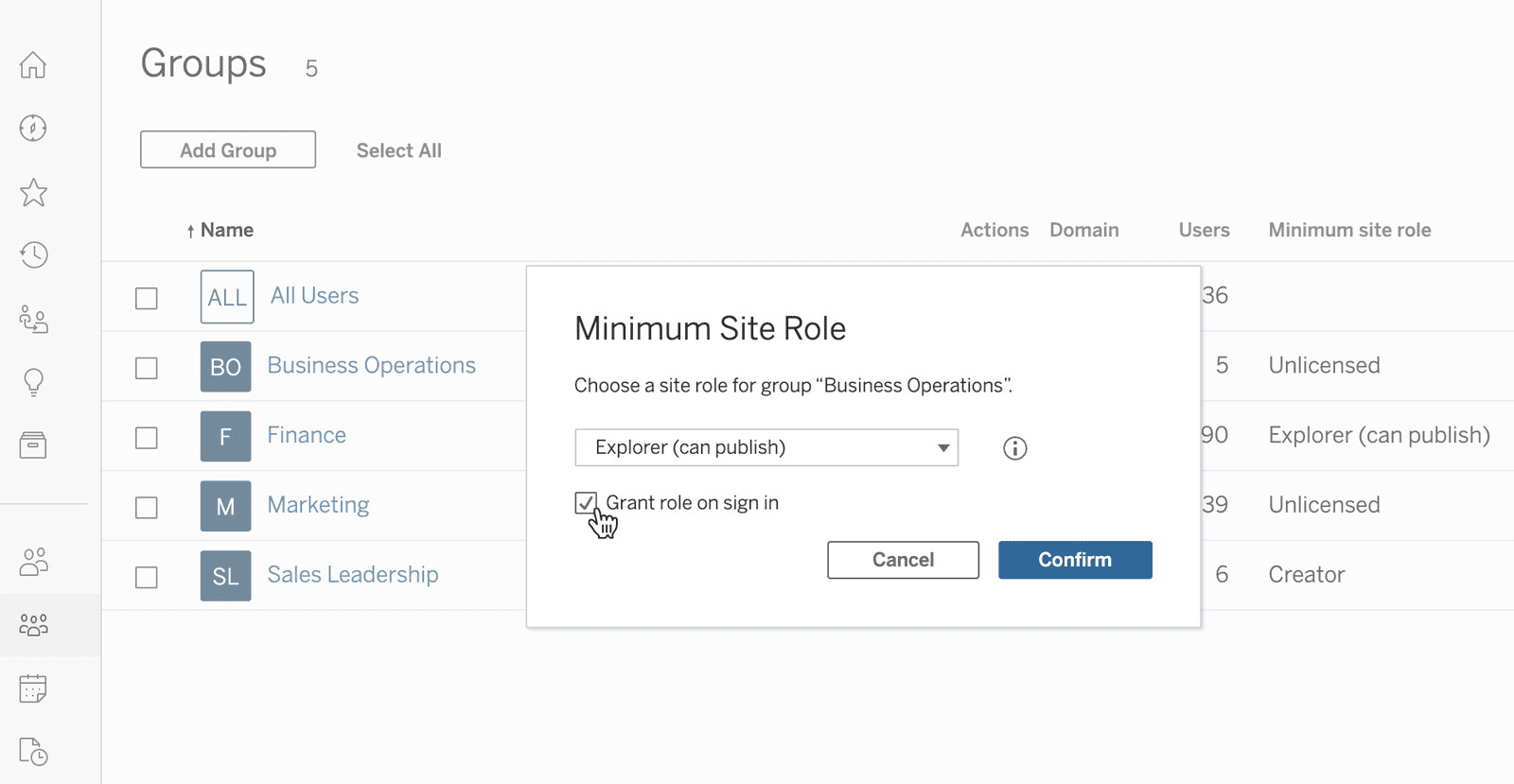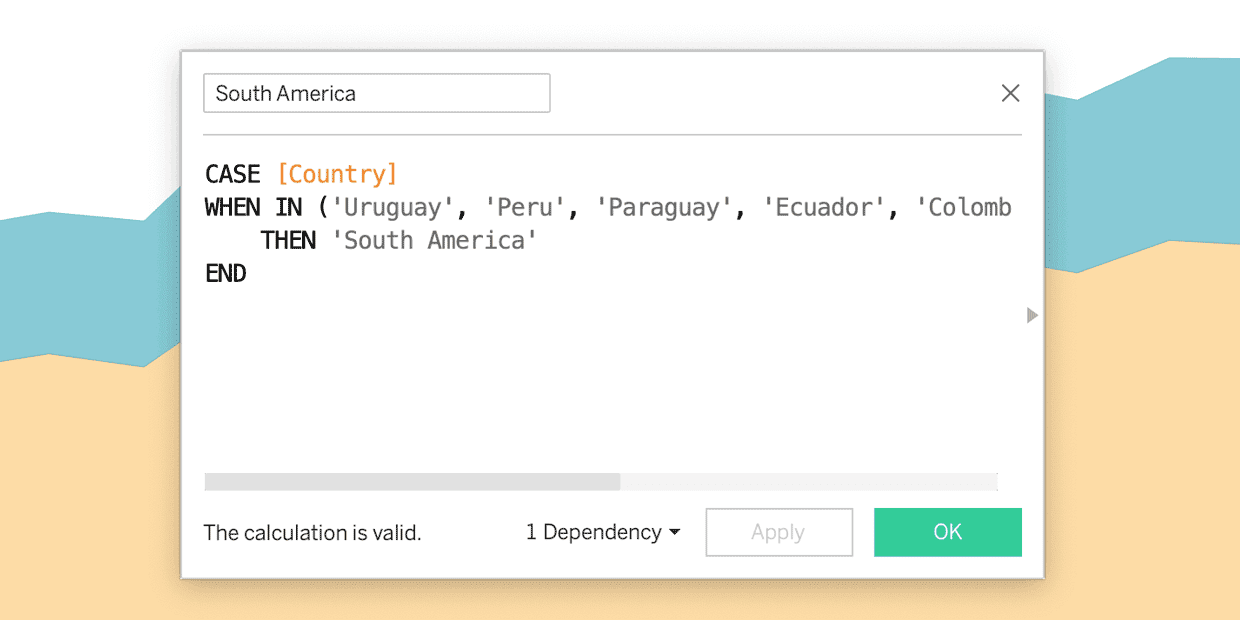Now available in Tableau: Write to database in Tableau Prep, grant license on sign in, deeper integration with SAP, and more
The newest release of Tableau is here! Tableau 2020.3 brings powerful functionality to help scale your analytics, making trusted data more accessible to everyone. Upgrade to take advantage of these new innovations, and visit the Tableau COVID-19 Data Hub for more resources as we continue to navigate these challenging times—we are regularly updating data and dashboards to keep everyone armed with the latest information.
Let’s look at the highlights in this release:
- Manage trusted data at scale with new write to database capabilities in Tableau Prep.
- Assign roles to designated groups so they’re automatically granted licenses upon their first time logging into Tableau Online or Tableau Server with grant license on sign in.
- Enjoy significant updates to our SAP connectivity experience, including new certifications with SAP and SAP HANA connector updates.
- Explore next-level analysis with predictive modeling functions and IN operator for calculations.
Let’s take a deeper look at some of the biggest features in this release.
Unlock more value from your prepared data with new write to database capabilities for Tableau Prep
Self-service data preparation allows users to more quickly get to the data they need, in the state that they need it. As we’ve continued investing in self-service data preparation with Tableau Prep, it’s been important that this prepped data can continue to be scaled and governed. Now, with 2020.3, Tableau Prep users have the power to prepare and write database tables to databases in the cloud with Amazon Redshift or Snowflake or with on-premises databases like MySQL, Oracle, PostgreSQL, SQL Server, or Teradata. By leveraging your existing investments in databases and governance policies, you can now centralize and scale your prepped data—make it immediately available for analysis in Tableau or use it for other analytical or data science use cases.

Writing to databases can often be a complex and time-consuming task. Tableau Prep Builder simplifies the process for those with and without database writing experience, whether you’re creating a new data table or appending data to an existing one. You can feel confident that the right fields are being properly mapped to the right data in your database with the visual and direct field mapping experience. And there’s no need to worry about corrupting or losing data in the process—Tableau automatically loads the data into a temporary table before merging it into the final table, ensuring the data has completely loaded.
Because write to database is fully integrated with the rest of the Tableau platform, and in particular, Tableau Catalog (part of Tableau Data Management) you can expect a seamless experience. This tight integration ensures that the tables, as well as any descriptions added to the columns, are immediately included in the lineage and impact analysis, so there’s a shared understanding of the data between the person who has prepared it and those who are consuming or analyzing it. Finally, any newly created tables are available in the Tableau Server and Tableau Online search, and in the connect to data experiences in both Tableau Desktop and web authoring—making these new tables more easily discoverable and accessible.
Extend the value of Tableau to more users with grant license on sign in
In Tableau 2020.3, site admins can now designate members—specific individuals, teams and departments, or even your entire organization—to be automatically granted a license and site role (Viewer, Explorer, Creator) upon their first time logging in to their Tableau Online or Tableau Server account. Admins can assign roles for users and groups before they login for the first time, so they’re automatically granted a seat. This removes the user’s need to request a license before using Tableau, and helps admins eliminate the time-consuming task of manually issuing one-off Tableau licenses.
Grant license on sign in allows you to build new designated groups and works with existing groups for maximum flexibility to keep admins in control of deploying Tableau seats across the organization. It's paramount that your organization can deploy Tableau at scale quickly to optimize your seat investment and scale up to get the most value out of Tableau.

As an example, Healthcare provides a great use case for grant license on sign in. A large university health system has roughly 75,000 doctors, nurses, and healthcare specialists, many of whom need essential data in Tableau to do their jobs. About 10,000 of them will log in to their Tableau accounts to access reports, workbooks, and dashboards in any given year. The problem is, the organization doesn’t know which 10,000 of their 75,000 health professionals will need a license.
Instead of purchasing licenses for every doctor, nurse, and healthcare specialist, they can now set a "to-be-assigned" license to a group of all 75,000 employees—and only purchase the 10,000 licenses they know they’ll need. This way, up to 10,000 employees can log into their Tableau site for the first time and be automatically granted a license at that moment. The healthcare professionals who need access to data have access when they need it most, and Tableau administrators don’t have the hassle of managing one-off license requests. When the organization gets close to their license limits, they can purchase more seats as needed. This provides a more efficient way to optimize licensing costs and remove potential bottlenecks from people getting to the data they need when they need it.
SAP HANA connector updates & new certification with SAP
Tableau and SAP have had a strong partnership for many years. It’s important that we continue to improve our enterprise investments so that you have complete confidence in our integration, and can trust that it’s highly optimized to support rapid data analysis.

In June, we announced our new official SAP Certification (HANA-BI-SQL 2.0) for integration with SAP HANA for Tableau Desktop, Server, Online, and Prep. The certification process is comprehensive, and the Tableau and SAP product and engineering teams worked closely together to best understand how our products work together to support our shared customers. Additionally, for those preparing to migrate to S/4HANA, we also released our Tableau and SAP S/4HANA whitepaper, providing detailed guidance and best practices on how to optimize using Tableau and S/4HANA together for analytics.
Now, in 2020.3, we are continuing to enhance our SAP HANA connector, enabling users to connect to Table Functions (stored procedures that return a table). Wherever you are in your Tableau and SAP journey, we are committed and with you every step of the way.
Level up your analysis with new analytics enhancements
Predictive modeling functions
We’re continuing to expand Tableau’s analytical breadth by bringing even more power and flexibility to Tableau’s predictive functionality. Starting today, there is a new way to build predictions within Tableau, using the familiar table calculation infrastructure. No need to access analytics extensions or write code in R or Python.
With predictive modeling functions, you can quickly build and update predictive models. Use these functions to understand relationships within your data, estimate missing data, and project data into the future—without ever leaving Tableau. Predictive modeling functions give you full flexibility to select your own predictors, use the model results within other table calculations, and export your predictions. Models and predictions are re-evaluated as you change the level of detail, add and remove marks, and subdivide by additional attributes. And since predictive modeling functions are table calculations, you have access to all existing table calculation functionality, including sharing visualizations and exporting data.
These two new table calculations, MODEL_PERCENTILE and MODEL_QUANTILE, use Tableau’s unique statistical engine to generate predictions and surface relationships within your data. Visit our predictive modeling blog post for a deep dive of the feature and walkthrough of how it works.
IN operator for calculations
And last but not least, IN operator for calculations has arrived in 2020.3! With this feature, comparing a list of values—especially large lists—becomes a much easier task. Use the IN operator for calculations to test whether a specified value matches any value in a list of comma-separated values, a set, or combined fields like City/State combinations. The IN operator supports string, numeric, data, and boolean data types.

These are just a few highlights from 2020.3. Check out tableau.com/new-features to learn more.
Thank you, Tableau Community!
You are at the heart of everything we do and the Tableau 2020.3 release is no different. We can’t do this without you, so thank you for your continued feedback and inspiration. Check out the Ideas forum to see all of the features that have been incorporated as a result of your brilliant ideas.
We’d also like to extend our thanks to the many testers who tried out Tableau 2020.3 in beta. We appreciate your time and energy to help make this release successful.
Get the newest version of Tableau today, and if you’d like to be involved in future beta programs, please sign up to participate.
Relaterade berättelser
Subscribe to our blog
Få de senaste Tableau-uppdateringarna i din inbox.








